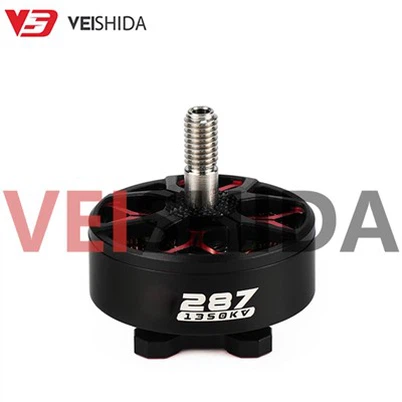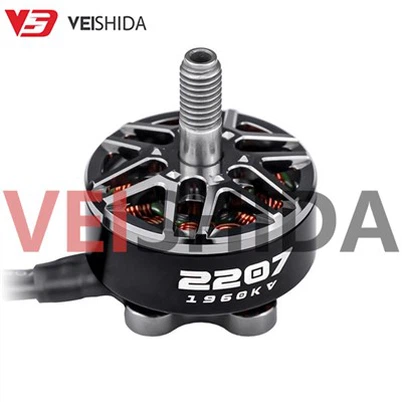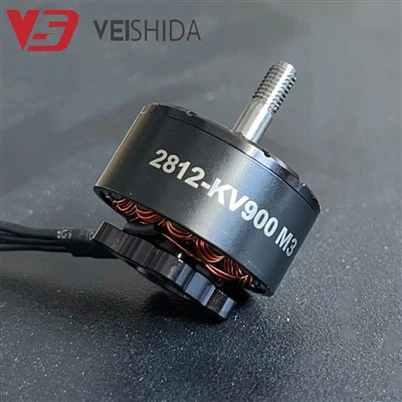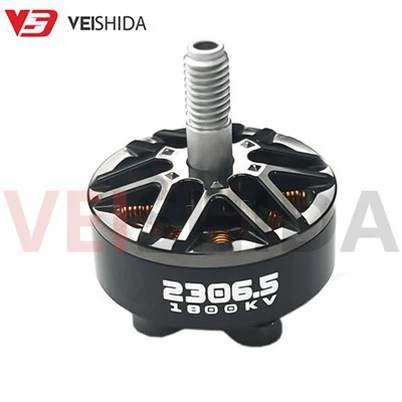How do drone motors work? DC or AC?
Leave a message
Introduction: The "power source" of drones
With the development of the low-altitude economy, drones are moving from toys for enthusiasts to core equipment for professional applications. They fly over farmland to spray pesticides; they travel through cities to deliver express deliveries; they go deep into mines, forests, and disaster areas, taking on more and more industrial and public tasks.
Behind all this, there is a key power core that determines the efficiency, stability and life of the flight - that is the motor. It drives the blades to rotate at high speed, providing lift and control force, allowing the drone to truly "fly".
So how does the drone motor work? Does it use direct current or alternating current? This article will start from the basic principles, help you understand the working mechanism of the motor, and explain why almost all drones choose brushless DC motors.

The basic working principle of drone motor
The core task of drone motors is to convert the electrical energy in the battery into mechanical energy to drive the propeller to rotate at high speed to generate lift and thrust. Currently, most mainstream drones use brushless DC motors (BLDC), which are widely used in civil and commercial drones for their high efficiency, low noise, and low maintenance costs.
1. The structure of the drone brushless motor
A typical drone brushless motor is mainly composed of the following parts:
Stator: It is fixed and has three-phase electromagnetic coils wound inside.
Rotor: Rotates with the electromagnetic field and is usually equipped with permanent magnets;
Electronic speed controller (ESC): Electronic speed controller, used to control the direction of current flow to achieve precise speed regulation and starting.
2. Operation principle: electromagnetic drive + electronic control
The operating principle of brushless motors is based on electromagnetic induction:
The battery powers the ESC;
The ESC periodically switches the energization sequence of the stator coils according to the control signal;
When the coil is energized, a rotating magnetic field is formed, which attracts or repels the permanent magnets on the rotor;
The rotor rotates with the magnetic field, driving the motor shaft and blades to rotate, thereby generating lift;
The entire process does not require mechanical brushes and relies on electronic control to achieve rotation, which is more efficient and less wear-prone.
3. Why is brushless design important?
Compared with traditional brushed motors, brushless motors eliminate the carbon brushes and commutator structure, which brings several key advantages:
Longer life: no mechanical contact parts, reducing wear;
Higher efficiency: less energy loss and faster response;
Lower noise: the operation process is quiet and smooth;
Easier maintenance: No need to regularly replace carbon brushes or clean brush shavings.

Does the drone use a DC motor or an AC motor
This is a question that many beginners or new users in the industry often ask: "Is the motor of a drone DC or AC?"
Clear answer: Mainstream drones use brushless DC motors (BLDC)
Currently, more than 95% of multi-rotor drones and fixed-wing drones on the market are equipped with brushless DC motors (BLDC), rather than traditional AC motors (AC Motors).
Note: Some low-priced toy machines and experimental platforms may still use brushed motors or other types, so the '100%' statement is not used.
Although this motor has "DC" in its name, its driving method is more like "simulated AC": it uses a DC power supply (such as a lithium battery) as energy, and uses an electronic speed controller (ESC) to convert DC power into three-phase current that is switched in sequence, thereby forming a rotating magnetic field to drive the rotor to rotate.
Note: Although we say "simulated AC", the brushless DC motor (BLDC) does not use real AC. It uses an electronic speed controller (ESC) to switch the direction and sequence of current in three sets of coils in turn to form a continuously rotating magnetic field, thereby driving the rotor to move. The power source is still essentially DC, so it is classified as a "DC motor".
Why not use AC motors
Although AC motors (such as induction motors and synchronous motors) are very common in industrial scenarios, they are not suitable for use in drones for the following reasons:
|
Comparison Dimensions |
Brushless DC Motor (BLDC) |
AC Motor |
|
Power supply matching |
Directly adapt to DC power supply systems such as lithium batteries |
Requires AC power or inverter, poor portability |
|
Volumetric Weight |
Small and light, suitable for flight loads |
Usually large and heavy |
|
Speed control |
Easy to precisely control speed and direction |
The control is complex and the response speed is slow |
|
Energy efficiency and heat generation |
High efficiency, low heat generation |
Relatively low energy efficiency and high heat dissipation requirements |
|
Application Scenario |
Drones, power tools, model equipment, etc. |
Industrial equipment, home appliances, fixed occasions |
BLDC is a more suitable "DC solution" for drones
Use batteries ➜ Energy source is DC
Use ESC ➜ Control logic is highly digital
Operation mode ➜ Simulate three-phase commutation, but the essence is still a DC system
Therefore, from the power supply method, control method to usage scenario, the brushless DC motor is undoubtedly the most suitable motor type for UAV flight platforms.

VSD drone motor recommendation
Through this article, you have learned that brushless DC motor (BLDC) is the most mainstream and optimal power system for current drone platforms, with multiple advantages such as high efficiency, long life, and low noise.
If you are looking for a motor with high performance, strong reliability and adaptability to a variety of flight scenarios, the VSD drone motor series will be an ideal choice.
We focus on the research and development and manufacturing of high-performance brushless outer rotor motors. Our products have been widely used in racing drones, multi-rotor aerial photography platforms, industrial-grade surveying and inspection drones, etc. Core advantages include:
Full voltage range coverage: supports multiple voltage platforms from 4S to 12S;
Rich KV values: from 380KV to 2400KV, taking into account both endurance and burst;
High thrust-to-weight ratio design: The maximum thrust can reach 9kg, meeting the requirements of heavy load scenarios;
Complete supporting solutions: Provide ESC selection suggestions, supporting test data and technical docking support;
Support customization: OEM/ODM service to adapt to your structure, parameters and performance requirements.
VSD popular motor model recommendation
|
Model |
KV value range |
Maximum Power |
Maximum thrust |
Typical application scenarios |
|
380KV |
4257W |
9034g |
Industrial-grade multi-rotor, large-load UAV |
|
|
420KV |
3037W |
7232g |
Multi-rotor aerial photography and commercial surveying and mapping platform |
|
|
900–1520KV |
1617W |
4185g |
Medium-sized aerial photography and flexible flying platform |
|
|
1800–2400KV |
901W |
1683g |
Cross-country drones, light racing drones |
|
|
1300–1950KV |
1623.5W |
2910g |
Multi-rotor aircraft/competitive aerial photography platform |
|
|
1960KV |
902W |
1702g |
FPV Racing Drone |
|
|
900KV |
1010W |
2710g |
Medium-load UAV, low-noise aerial photography platform |
|
|
1350–1750KV |
1436W |
2728g |
Multi-purpose small flying platform |
Welcome to contact us for detailed product manuals, test reports or technical parameter support. VSD provides sample proofing services and professional technical docking to help your drone project land quickly.








